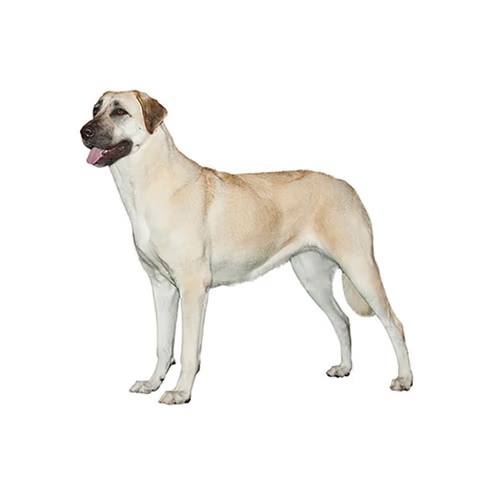
The Anatolian Shepherd Dog originated in rural Turkey about 6,000 years ago to guard livestock and serve as a companion to shepherds. Large, powerful and possessive, this breed adores his family but can be suspicious of strangers. The Anatolian Shepherd Dog has two coat varieties, Short and Rough, both which require little grooming. The breed does best with moderate exercise.
DID YOU KNOW? This breed is slow to mature, reaching adulthood at about 4 years of age.
ALSO KNOWN AS: Karaba? (Blackhead), Anatolian Blackhead (Anadolulu Karaba?), Kangal
The need-to-know
- Dog suitable for experienced owners
- Extra training required
- Enjoys active walks
- Enjoys walking one to two hours a day
- Giant dog
- Heavy drool
- Requires grooming every other day
- Non hypoallergenic breed
- Quiet dog
- Guard dog. Barks, alerts and it's physically protective
- May require training to live with other pets
- May require training to live with kids
Personality

This breed's working history is still present today – he is naturally territorial, independent and highly intelligent. Because of the strong guarding instinct, early and ongoing socialisation and patient training is essential. Do ensure your garden is escape-proof with high possible double, fencing. Be sure to keep him occupied, as he may become destructive or problematic if bored.
History and Origins

The Anatolian Shepherd Dog, also known as the Karabash, is an ancient breed descended from the Mastiff and flock-guarding dogs of the Middle East. Tall, athletic and powerful, they protected their wards against such fierce predators as bears and wolves. Now they are used for guarding flocks of sheep and goats in Turkey, where they are regarded as a national emblem and are called 'Coban Kopegi' (translated as 'Shepherd's Dog').
Nutrition and Feeding

Giant-breed dogs, as well as having giant appetites, benefit from a different balance of minerals and vitamins, supporting different joint and cartilage needs. The Anatolian Shepherd dog breed is prone to bloating and stomach problems; try feeding smaller, more frequent meals to help minimise the risk.
Exercise

For his size, he doesn't need vast amounts of exercise; two one-hour walks a day should keep him happy. He enjoys walking – his working ancestors would have roamed many, many miles with nomadic shepherds.
Other Information

Health and common issues
The Anatolian dog breed is generally a very hardy breed, but as with many breeds they can occasionally suffer from hip dysplasia (a condition that can lead to mobility problems). Hip scoring of dogs prior to breeding is therefore important.
Best family dog breeds
While many dogs are traditionally thought of as being good with children , all dogs and children need to be taught to get on with and respect each other, and be safe together. Even so, dogs and young children should never be left alone together and adults should supervise all interactions between them.